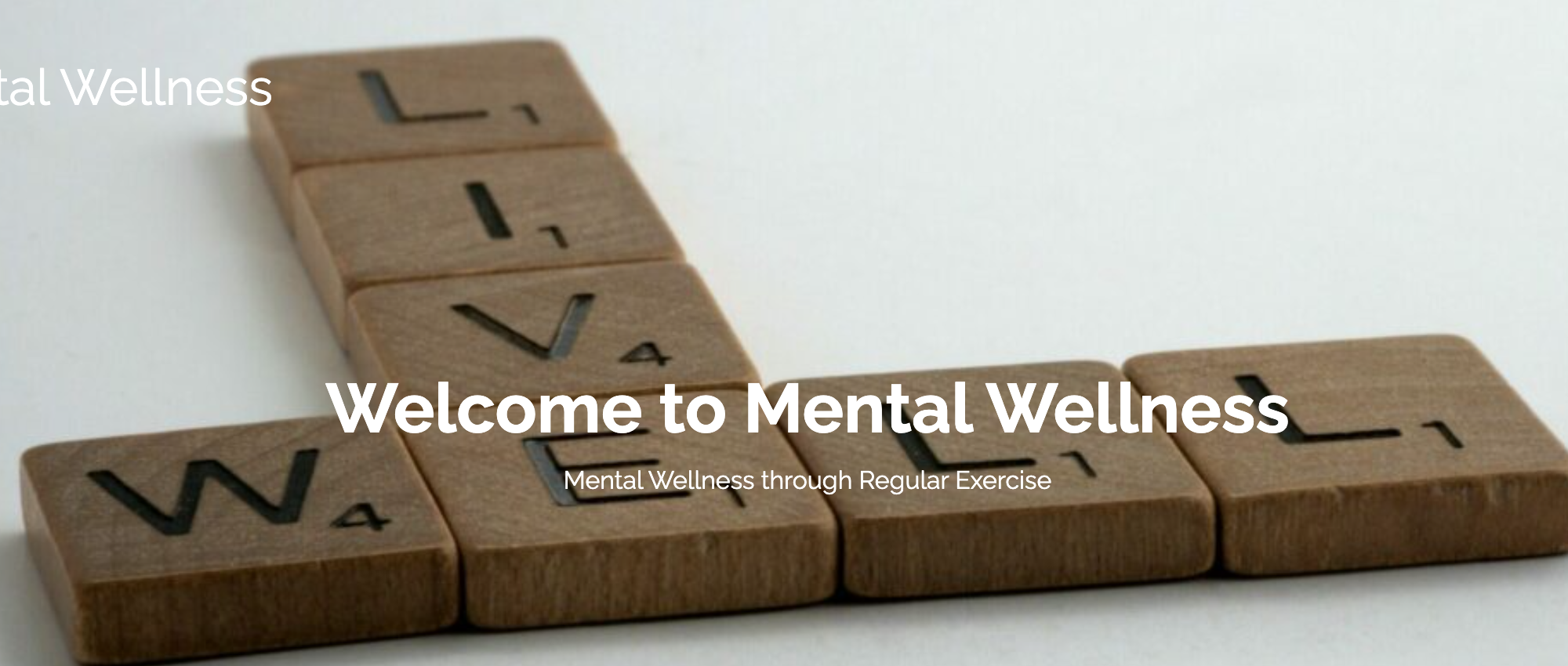Welcome to our Learning Object!
This learning object is meant to be accessed freely by learners or with the help of a facilitator. You will find all our original content within our Wellness Website which includes;
- Infographics x 2
- Prezi
- Powerpoint (Learning Objectives)
- Canva Tutorial
- Polleverywhere Tutorial
- PollEverywhere Poll
- Screencastify Facilitator Guide
- Padlet Experience
- Interactive Google Doc
- H5P Assessment
- Canva Self-Assessment
Discussion
In the making of our Wellness website, we have implemented many learning theories and multimedia learning principles in order to effectively reach our learners, move the intended information to their long term memory storage and guide them to meet the intended learning outcomes. Below, we will discuss the many theories and principles we used, as well and how and why we implemented them.
We have designed and structured this website wearing the lens’ of Cognitive and Constructivist theorists. We have done this by taking a learner-centred approach, which encourages learners to build their own, contextualized understandings of the material. We encourage discovery through self-reflective, collaborative activities such as our Padlet. We provide a variety of available resources, so that learners can interpret the information that works best for their own context, and scaffold new understanding that is meaningful for them. We have presented an integrated set of material designed to encompass one usable body of knowledge and have sourced data- and science-driven materials as researched by experts in their fields. Finally, we acknowledge that learner success depends on learners’ capacity, motivation, beliefs, and effort. Therefore, we included self-reflection activities after our learning resources in hopes that our learners will make a connection with the context and have them potentially alter their beliefs, spur motivation and effort; thereby expanding their capacity.We hope that through the above, we will change learners’ metal models of what mental wellness means to them.
We first considered the Dual Coding and Cognitive Load Theories. A learner’s short term memory is limited and can be overloaded, causing information to be forgotten (Bates, 2019). Therefore, we chose to design our learning experience in a fashion that reduces load on working memory. Therefore, we chunked our website into sections and steps. We offer a variety of channels to obtain and retain information and we have ensured that learners have the time to explore the website and tinker with the information as they feel fit. This way, learners can assimilate that information at their own pace. We combined visual and verbal channels to allow our learners to better process more information.
Next, we considered the Prior knowledge principle and the Pre-Training principle. “People learn better from a multimedia message when they know the names and characteristics of the main concepts” (Bates, 2019). Therefore, we chose to create an interactive padlet, which allows us to draw on learners’ prior knowledge so that they can connect their experience to our presentation, give hints into what we will be diving into and provide a space where they can add information which they have learned from the website so that they, we, and others can refer back to it.
We added several videos which explain Mental Wellness which will help learners connect to this subject matter. We created learning objectives that will give learners a purposeful ‘hook’ into the material. Finally, we included a screencastify tutorial video, a canva tutorial and a section where the instructor walks the learner how to engage with the website, so that the learner can see what is expected of them and be given a sense of how to use the intended materials BEFORE the learning takes place.
Image 3. Recorded video showing instructors how to navigate and engage with the website.
Not only did the aforementioned screencastify aid in pretraining and prior knowledge, but it adhered to the Multimedia & Modality Principles which can help our learners learn better since there are spoken words and imagery rather than words alone (Bates, 2019). We adhere to these principles by providing a written lesson plan and a screencast of how the lesson can be taught. This allows the learner, or potential facilitator, to better see/understand what is expected of them due to several visual, audio and video representations.
All of the learning on the website is presented in multiple modes. We have both an infographic which explains how an active lifestyle can help mental wellness and a video.
Multiple modes expose learners to the intended information in several ways so that, through repetition and re-representation, they take that learning into their long term memory storage. Within all of the videos and screencastify videos, we ensured to follow the Redundancy Principle. Since, learners learn better when there is only animation and narration (Bates, 2019), we chose to ensure that there were limited written words where we would be speaking. Therefore, in the screencasts, we did as much as we could to limit the amount of written text which came along with oral explanation. That being said, we allowed for transcription for those who are hearing-impaired.
We moved from the redundancy principle into The Signaling (or Cueing) Principle. “People learn better when cues are added that highlight the key information and its organization” (Bates, 2019). Therefore, we used a fade function in both our Prezi and PowerPoint which allowed for information to enter the screen when we spoke to it and ensured that only one piece of information was given at one time.
Image 6: Screen after fade in.
We demonstrate signaling again in our blogging. We highlighted the important information within the blog so that learners could easily pick out the important information. For example, blue text highlighted the links within the website and CAPITALIZED or bolded gave awareness to other important information.
We then came to the Spatial Contiguity Principle. Throughout all of our infographics, presentations and website we aimed to keep photos/images within close proximity to the text which relates to it. This way, the learners can make sense of the text by seeing the video/ images that relate to it in real time.
We then moved to the Segmenting Principle, which specifies that learners should be empowered to view content at their own pace (Bates, 2019).For instance, the Prezi can be viewed in sequence, but the movement through the different phases is user-controlled. The videos presented in the Prezi are from YouTube and have the expected functions enabling repetition, skipping backward and forward, and presentation speed. Further, the Prezi’s individual elements can be freely navigated at the end. The website itself is also presented right-to-left, top-to-bottom, and is intended to be worked through in sequence. However, we have created it as separate pages in order to delineate the sections of the lesson for the learner, and to allow easy reference to any individual part of the site. The pages are self-contained and have their own value. We hope that learners see this and feel it useful to be able to easily navigate to any one of them when it suits them.
Moving forward, we followed some of the characteristics of Instructional Design Models, created by Branch and Merrill, which are described as follows. Our website and lessons are learner-centred. We draw upon learners’ prior knowledge and experience by asking them to continually self-reflect as they work through the material and connect it to their own context. We make the learning outcomes, as well as the mental wellness goals, explicit in a powerpoint presentation, so that learners can engage constructively with the goal-oriented process. We provide tutorials to empower learners to enhance understanding of the intended outcomes and have them reflect their new understandings back in creative tools, thus encouraging real-world performance. We provide a rubric to help guide them to success. Our outcomes are actionable and measurable since each has a unique, discrete product. The learning resources were all vetted for being science-based and empirical. We chose informational videos only when they were data-driven. Finally, we worked together as a team to build our resources. Therefore, learners will benefit simply because of the different knowledge, understanding, and perspectives that each of our members brought to the table.
Finally we took Flow Theory into consideration. “Flow’ is created when a learner engages their skills with a task they are invested in. Csikszentmihalyi suggests that the best way to do this is to find something that a learner enjoys doing and connect it to learning outcomes (Richards, 2021). We aimed to create flow through the use of informational presentations and material, and through self-reflection activities, to connect their context to the learning, we then present options for selecting a program of physical activity in as open-ended a way as possible.
We make suggestions but also give guidelines for independently finding a program. We encourage thinking about whether the learner would like to do the program individually or as part of a partnership. We hope that, with purpose gained from reliable data and self-reflection, the learner will engage with their chosen exercise program with reduced need for determination and resilience, thus potentially achieving ‘flow’ and joy in the journey.
Citation:
Bates, T. (2019). Teaching in a Digital Age – Models for media selection. https://pressbooks.bccampus.ca/teachinginadigitalagev2/chapter/9-1-models-for-media-selection/
Bates, T. (2020). Choosing Media. https://www.youtube.com/watch?v=-W79hGvukTs
Kampen, M. (2020). Everything You Need to Know about Scaffolding in Education. https://www.prodigygame.com/main-en/blog/scaffolding-in-education/
Mizrahi, J. (n.d.). Cengage. The Importance of Self-Reflection in Learning. https://todayslearner.cengage.com/the-importance-of-self-reflection-in-learning/
Paradigms of Education (2019). Paradigms – Cognitive constructivism. https://www.paradigmsofeducation.com/cognitive-constructivism/
Richards, Luke. “Multimedia Design for Learning.” EDCI 337: Interactive and Multimedia Learning, June 2021, edtechuvic.ca/edci337/2021/05/29/topic-4-multimedia-design-for-learning/.
Richards, Luke. “How We Learn, Key Learning Theories” EDCI 337: Interactive and Multimedia Learning, June 2021 https://edtechuvic.ca/edci337/2021/05/15/2-topic-how-we-learn-key-learning-theories/.
Kurt, S. “Instructional Design Models and Theories,” in Educational Technology, December 9, 2015. Retrieved from https://educationaltechnology.net/instructional-design-models-and-theories/ Dr. Serhat Kurt, Instructional Design Models and Theories. February 17, 2021.

